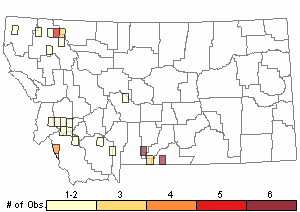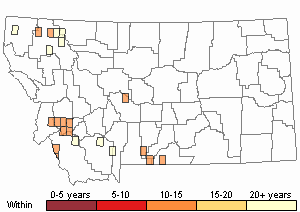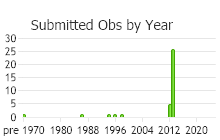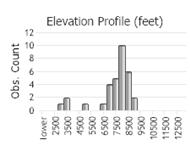View in other NatureServe Network Field Guides
NatureServe
Montana
Utah
Wyoming
Idaho
Wisconsin
British Columbia
South Carolina
Yukon
California
New York
Warnstorfia Moss - Sarmentypnum exannulatum
Other Names:
Warnstorfia exannulata
General Description
Plants: Green, tending toward yellow, or with pure red coloring. Stems with radial branching; possessing a central strand (FNA 2007).
Leaves: Stem leaves egg-shaped to somewhat deltoid, cupped, tapering slowly to the sickle-shaped (occasionally straight) apex; apex gradually tapered, ending in a narrow point, sometimes moderately longitudinally creased; base not extending down the stem; lower or upper margins (sometimes both upper and lower) with noticeable fine teeth; costa reaching 3/5 to most of the leaf length (FNA 2007).
Leaf Cells: Axillary hairs with up to 4 distal cells, hyaline when immature; alar area well-differentiated, extending from margins to or almost to the nerve, the cells swollen, fine-walled, hyaline (or red to brownish when mature); marginal cells frequently distinguished from the medial cells, becoming quite rectangular or widened or both (this characteristic quite variable, however) (FNA 2007).
Diagnostic Characteristics
Of wetland species that have gradually tapering and curving leaves toward the apex, W. exannulatum is one of the most common (FNA 2007).
The alar areas of the similar Warnstorfia fluitans generally do not extend as far distally as those of W. exannulatum. However, W. exannulatum does have phenotypes in which the alar region varies in its distal extension (FNA 2007).
Range Comments
In North America: Present in most Canadian provinces and territories; in the USA, found from MT to CO, w to the coastal states, also in scattered states of the northeast (FNA 2007). Known in Montana from Carbon, Beaverhead, Flathead, Glacier, Lake, Missoula, and Stillwater Counties (Elliott 2016).
Observations in Montana Natural Heritage Program Database
Number of Observations: 54
(Click on the following maps and charts to see full sized version)
Map Help and Descriptions
Relative Density

Recency



 (Observations spanning multiple months or years are excluded from time charts)
(Observations spanning multiple months or years are excluded from time charts)
Habitat
Soil and humus in lakes (Elliott 2016), near springs, late-melting snow patches, fens somewhat rich in minerals, underwater in lakes. Elevation: 0-13,780 feet (FNA 2007).
Reproductive Characteristics
Dioicous (FNA 2007).
Stewardship Responsibility
References
- Literature Cited AboveLegend:
 View Online Publication
View Online Publication Elliott, J.C. and A.K. Pipp. 2018. A Checklist of Montana Mosses (1880-2018). Updated 3 January, 2020. Montana Natural Heritage Program, Helena, Montana. 73 pp.
Elliott, J.C. and A.K. Pipp. 2018. A Checklist of Montana Mosses (1880-2018). Updated 3 January, 2020. Montana Natural Heritage Program, Helena, Montana. 73 pp.
- Additional ReferencesLegend:
 View Online Publication
View Online Publication
Do you know of a citation we're missing? Elliot, J. C. 1993. Second checklist of Montana mosses. Unpublished report. U.S. Forest Service, Region 1. Missoula, MT. 45 pp.
Elliot, J. C. 1993. Second checklist of Montana mosses. Unpublished report. U.S. Forest Service, Region 1. Missoula, MT. 45 pp. Lawton, E. 1971. Keys for the Identification of the Mosses on the Pacific Northwest. Reprinted from 'Moss Flora of the Pacific Northwest'. Published as Supplement No. 2 of the Journal of the Hattori Botanical Laboratory. Nichinan, Miyazaki, Japan. 66 pp.
Lawton, E. 1971. Keys for the Identification of the Mosses on the Pacific Northwest. Reprinted from 'Moss Flora of the Pacific Northwest'. Published as Supplement No. 2 of the Journal of the Hattori Botanical Laboratory. Nichinan, Miyazaki, Japan. 66 pp. Lawton, E. 1971. Moss Flora of the Pacific Northwest. Hattori Botanical Laboratory. Japan: Yamabuki-cho, Shinjuku-ku, Tokyo. 362 pages plus appendices.
Lawton, E. 1971. Moss Flora of the Pacific Northwest. Hattori Botanical Laboratory. Japan: Yamabuki-cho, Shinjuku-ku, Tokyo. 362 pages plus appendices.
- Web Search Engines for Articles on "Warnstorfia Moss"





